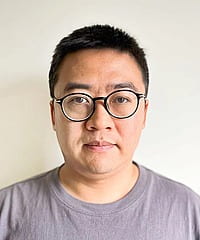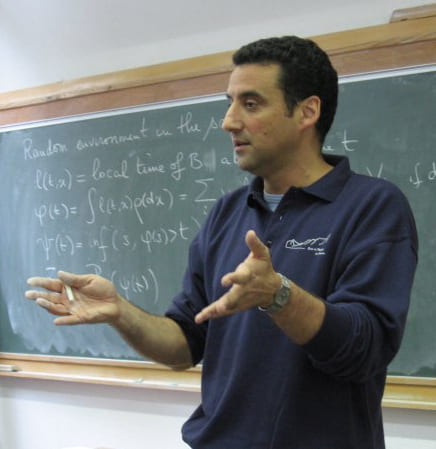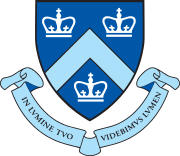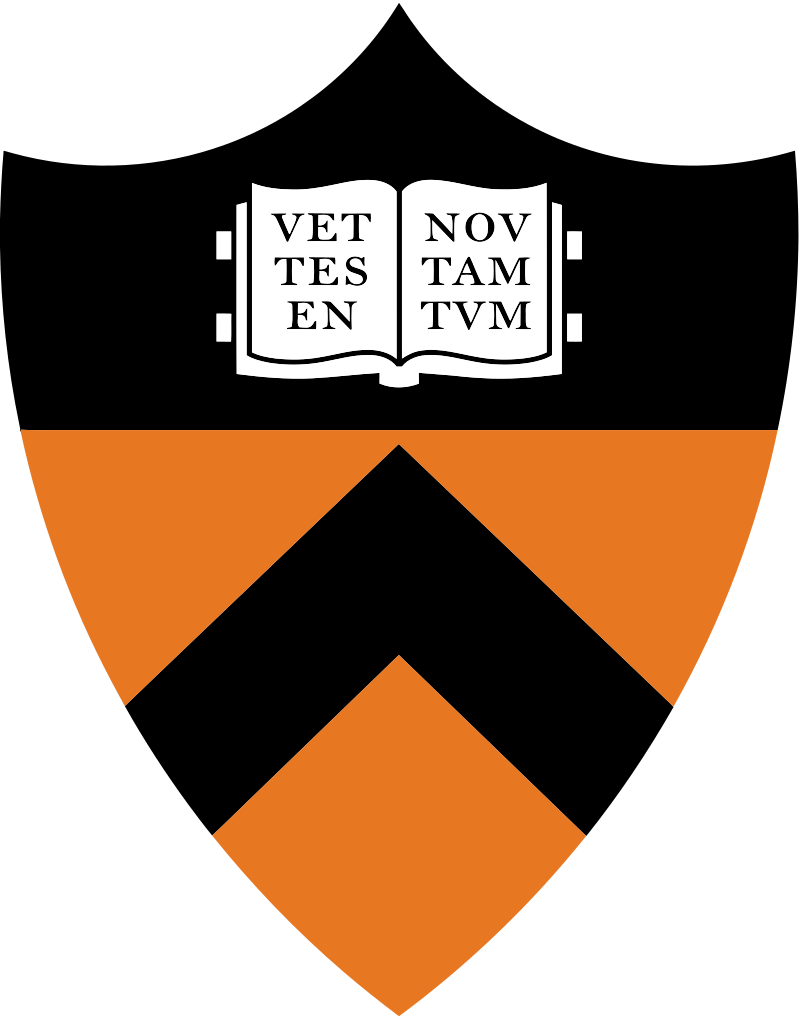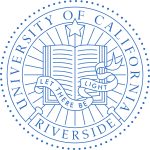Fall 2025:
Anne Schilling (UC Davis)
December 4th, 2025 at Northeastern
Title: Crystal skeletons
Abstract: Crystal bases were introduced in the 1990s by Lusztig and Kashiwara as a combinatorial tool to study the representation theory of quantum groups. In type A, characters of highest weight crystals are Schur functions. Recently, quasicrystals were introduced as subgraphs of crystals whose characters are Gessel’s quasisymmetric functions. Crystal skeletons were introduced by Maas-Gariépy in 2023 by contracting quasi-crystal components in a crystal graph. On the representation theoretic level, crystal skeletons model the expansion of Schur functions into Gessel’s quasisymmetric functions. Motivated by questions of Schur positivity, we provide a combinatorial description of crystal skeletons, and prove many new properties, including a conjecture by Maas-Gariépy that crystal skeletons generalize dual equivalence graphs. We then present a new axiomatic approach to crystal skeletons. This talk will introduce the various concepts and also highlight the recent developments in this field.
509/511 Lake Hall, 4:30 pm. Pre-colloquium reception at 4:00 pm in 553 Lake Hall.
Scott Sheffield (MIT)
November 13th, 2025 at Northeastern
Title: Yang–Mills theory and random surfaces
Abstract: The Clay Institute famously offered one million dollars to anyone who could mathematically construct and understand a certain continuum version of “Yang–Mills gauge theory.” In addition to physics, this problem draws from many areas of mathematics: geometry, topology, analysis, representation theory, probability, combinatorics, numerical computation, and so forth. Nearly every physicist and mathematician can appreciate at least a piece of the problem.
509/511 Lake Hall, 4:30 pm. Pre-colloquium reception at 4:00 pm in 553 Lake Hall.
Javier Gomez-Serrano (Brown)
November 6th, 2025 at MIT
Title: AI-Driven Mathematical Discovery: Singularities, Algorithms, and Beyond
Abstract: Machine learning is transforming mathematical discovery, enabling advances on longstanding open problems. This talk explores two complementary approaches illustrating different paradigms for AI and mathematics.
On the one hand, I will present a systematic discovery of unstable singularities in multi-dimensional partial differential equations. While most numerical methods historically found only stable singularities, we discover families of unstable singularities requiring infinitely precise initial conditions. Combining curated machine learning architectures with high-precision optimization and mathematical analysis, we achieve in some cases near machine precision, meeting requirements for rigorous computer-assisted proofs.
On the other, I will discuss AlphaEvolve, a general-purpose evolutionary coding agent that uses large language models to autonomously discover old and new mathematical constructions and potentially go beyond them. AlphaEvolve tackles a wide variety of problems across analysis, geometry, combinatorics, and number theory. This illustrates how general-purpose AI systems can systematically successfully explore broad mathematical landscapes at an unprecedented speed, leading us to do mathematics at scale.
Together, these examples reveal complementary roles for machine learning and mathematics in the future: deep, precision-focused small models for specific problems versus broad, systematic exploration across domains via large models.
Room 2-190, 4:30pm. Pre-colloquium reception at 4:00 pm in Room 2-290.
Søren Galatius (Columbia)
October 30th, 2025 at Brandeis
Title: Graphs complexes and K-theory
Abstract: I will recall a version of Kontsevich’s graph complexes, and explain a relationship to algebraic K-theory. Based on joint work with Brown, Chan, and Payne.
Goldsmith 317, 4:15pm. Preceded by refreshments at 4pm in the common room.
Yu Deng (Chicago)
October 17th (Friday), 2025 at MIT
Title: The Hilbert sixth problem: particle and waves
Abstract: A major component of the Hilbert sixth problem concerns the derivation of macroscopic equations of motion, and the associated kinetic equations, from microscopic first principles. In the classical setting of Boltzmann’s kinetic theory, this corresponds to the derivation of the Boltzmann equation from particle systems governed by Newtonian dynamics; in the theory of wave turbulence, this corresponds to the derivation of the wave kinetic equation from nonlinear dispersive equations.
In this talk we present recent joint works with Zaher Hani and Xiao Ma, where we consider the hard sphere model in the particle setting, and the cubic nonlinear Schrödinger equation in the wave setting. In both cases we derive the corresponding kinetic equation up to arbitrarily long times, as long as the solution to this kinetic equation exists. This is a key step towards the
resolution of the Hilbert sixth problem.
Room 2-449, 4:00pm. Pre-colloquium reception at 3:30 pm in Room 2-290.
Sourav Chatterjee (Stanford)
October 16th, 2025 at MIT
Title: Neural networks can learn any low complexity pattern
Abstract: Neural networks have taken over the world, but research on why they work so well is still in its infancy. I will present a baby step in this direction, based on joint work with my student Tim Sudijono. We show, with quantitative bounds, that a certain kind of neural network can quickly learn any pattern that can be expressed as a short program. An example is as follows. Let N be a large number, and suppose we have data consisting of a sample of X’s and Y’s, where each X is a randomly chosen number between 1 and N, and the corresponding Y is 1 if X is a prime and 0 if not. The sample size n is negligible compared to N. If we fit a neural network to this data which is “sparsest” in a suitable sense, it turns out that the network will be able to accurately predict if a newly chosen X is a prime or not, with a sample of size as small as (log N)^2 — even though the network does not know, a priori, that we are asking it to detect primality. The talk will be accessible to those with no background in neural networks; I will define all necessary concepts.
Room 2-190, 4:30pm. Pre-colloquium reception at 4:00 pm in Room 2-290.
Sergey Fomin (Michigan)
October 9th, 2025 at Harvard
Title: Incidence geometry and tiled surfaces
Abstract: We show that various classical theorems of linear incidence geometry, such as the theorems of Pappus, Desargues, Möbius, and so on, can be interpreted as special cases of a general result that involves a tiling of a closed oriented surface by quadrilateral tiles. This yields a general mechanism for producing new incidence theorems and generalizing and interpreting the known ones. This is joint work with Pavlo Pylyavskyy.
Harvard Science Center Hall D, 4:30pm. Preceded by refreshments at 4pm in the common room.
Spring 2025:
Alan Edelman (MIT)
April 24th, 2025 at Brandeis
Title: Symmetric Spaces, Random Matrix Theory, and Numerical Linear Algebra
Abstract: We really enjoy when different areas of pure and applied mathematics interact. We take a close look at the connection of symmetric spaces, random
Goldsmith 226, 4:15pm. Preceded by refreshments at 4pm in the common room.
Melody Chan (Brown)
April 17th, 2025 at Northeastern
Title: Moduli spaces in tropical geometry
Abstract: I intend to give a true introduction, accessible to beginning graduate students, to the topics in the title: what is tropical geometry? What is a moduli space? And how can one be used to study the other? Then I’ll discuss some aspects of joint work with Francis Brown, Søren Galatius, and Sam Payne, in which we identify a Hopf algebraic structure on the weight 0 subspace of the compactly supported cohomology of the moduli space of abelian varieties and deduce a number of consequences.
509/511 Lake Hall, 4:30 pm. Pre-colloquium reception at 4:00 pm in 553 Lake Hall.
Vyjayanthi Chari (UC Riverside)
April 3rd, 2025 at Northeastern
Title: Representations of quantum affine sl(n) and connections with affine Hecke algebras and the category O(gl(r))
Abstract: The study of finite dimensional representations of quantum affine algebras goes back several decades. Many important results have been proved and deep techniques have been developed over the years; but many interesting natural questions remain unanswered. More recently the work of Hernandez and Leclerc on monoidal categorification has led to a renewed interest in the subject. The influential work of Kashiwara and his collaborators have led to further substantial developments in the subject. In this talk, we will be guided by another remarkable connection, via affine Hecke algebras, with the category of smooth representations of GLn(F) where F is a non–Archimedan field. We will discuss this connection, especially with the work of Lapid–Minguez. Motivated in part by their work, we introduce a family of modules for the quantum affine algebra and give an explicit determinantal formula for its character. As an application of our results we explain how to compute certain Kazhdan–Lusztig coefficients in the Bernstein-Gelfand–Gelfand category O.
509/511 Lake Hall, 4:30 pm. Pre-colloquium reception at 4:00 pm in 553 Lake Hall.
Hong Wang (NYU Courant)
March 31st (Monday), 2025 at MIT
Title: Kakeya sets in R^3
Abstract: A Kakeya set is a compact subset of R^n that contains a unit line segment pointing in every direction. Kakeya set conjecture asserts that every Kakeya set has Minkowski and Hausdorff dimension n. We prove this conjecture in R^3 as a consequence of a more general statement about union of tubes. This is joint work with Josh Zahl.
Room 2-190, 4:30pm. Pre-colloquium reception at 4:00 pm in Room 2-290.
Jörn Dunkel (MIT)
March 13th, 2025 at Northeastern
Title: Model inference for active matter
Abstract: Recent advances in live-imaging techniques provide dynamical data ranging from the cellular to the organism scale. Notwithstanding such experimental progress, quantitative mathematical models often remain lacking, even for moderately complex classes of biological systems. Here, I will survey our ongoing efforts to implement computational frameworks for inferring predictive dynamical equations from multi-scale imaging data. Example applications range from cell locomotion and neuromechanical control to collective swarming behaviors in animal groups.
509/511 Lake Hall, 4:30 pm. Pre-colloquium reception at 4:00 pm in 553 Lake Hall.
Alex Lubotzky (Hebrew University)
February 20th, 2025 at MIT
Title: High Dimensional Expanders
Abstract: Expander graphs have been an intensive topic of research in math and CS during the last six decades. In the last two decades a high dimensional theory has emerged with (very different) applications in math & CS. This colloquium talk is actually the first of 8 independent (but related) lectures about some aspects of the theory of HDX and its applications, as well as a number of open problems and suggestions for further research. This lecture will focus on three main problems (a) Gromov overlapping property, (b) Locally testable codes and (c) Are all groups sofic?
Room 2-190, 4:30 pm. Pre-colloquium reception at 4:00 pm in Room 2-290.
Anna Seigal (Harvard)
January 30th, 2025 at Brandeis
Title: Factorizing data
Abstract: We can find structure in data by factorizing it into building blocks, which should be interpretable for the context at hand. A classical example is principal component analysis (PCA), which uses the eigendecomposition of the covariance matrix to find axes of variation in a dataset. Starting from PCA, I will discuss the matrix and tensor decompositions that arise when factorizing data, and the linear and multilinear algebra that underpins their theoretical properties. We will see examples from causal inference, dimensionality reduction, and signatures of paths.
Goldsmith 226, 4:15pm. Preceded by refreshments at 4pm in the common room.
2022- Fall 2024 Archive:
Elon Lindenstrauss (Institute for Advanced Study)
September 5th, 2024 at Brandeis
Title: New effective results regarding the Oppenheim Conjecture and polynomial effective equidistribution
Let Q be an indefinite ternary quadratic form. In the 1980s Margulis proved the longstanding Oppenheim Conjecture, stating that unless Q is proportional to an integral form, the set of values Q attains at the integer points is dense in R. We give quantitative results to that effect. In particular, if the coefficients of Q are algebraic (but Q is not proportional to an integral form), and if (\alpha,\beta) is an interval not containing 0, the number of integer points v in a sphere of radius R for which \alpha<Q(v)<\beta is asymptotic (as R \to \infty) to the volume of the corresponding shape in R^3 with a power saving error term.
Goldsmith 300, 4:15 pm. Preceded by snacks in Goldsmith 100 at 4pm .
Ewain Gwynne (University of Chicago)
September 19th, 2024 at MIT
Title: Random surfaces and Liouville quantum gravity
What is the most natural way of choosing a random surface (2d Riemannian manifold), say with the topology of the sphere? The answer is far from obvious since the space of all Riemannian metric tensors on the sphere is infinite-dimensional. On the other hand, this question has connections to topics in theoretical physics such as string theory, Yang-Mills theory, conformal field theory, statistical mechanics, and quantum gravity. I will give an introduction to the theory of Liouville quantum gravity (LQG), which allows us to make rigorous sense of random surfaces. I will also touch on some recent developments concerning the supercritical (strongly coupled) phase of LQG and analogs of LQG in higher dimensions. I will assume no background knowledge beyond basic probability and analysis.
Room 4-270, 4:30 pm. Pre-colloquium reception at 4:00 pm in Room 2-290.
Amir Mohammadi (UCSD)
October 10th, 2024 at MIT
Title: Dynamics on homogeneous spaces: a quantitative viewpoint
Rigidity phenomena in homogeneous spaces have been extensively studied over the past few decades with several striking results and applications. We will give an overview of activities pertaining to the quantitative aspect of the analysis in this context with an emphasis on recent developments and applications.
Room 2-190, 4:30 pm. Pre-colloquium reception at 4:00 pm in Room 2-290.
Larry Guth (MIT)
October 24th, 2024 at MIT
Eric M. Opdam (University of Amsterdam)
November 21st, 2024 at Northeastern
Title: Hecke algebras, residues and unitary representations
Aaron Naber (Northwestern)
December 5th, 2024 at MIT
Title: Energy Identity and Nonlinear Harmonic Maps
Abstract: We begin this talk with an introduction to linear and nonlinear harmonic maps between Riemannian manifolds, with a first goal of understanding some basic examples and uses in geometry and analysis. Unlike linear harmonic maps, which are always smooth and well behaved, nonlinear harmonic maps may exhibit singularities of various sorts. We will discuss singularities which can form, both for individual solutions and for sequences. We will give examples and discuss how they relate to the general theory, attempting to end at an explanation of the energy identity conjecture of nonlinear harmonic maps. Work discussed is joint with Daniele Valtorta.
Phillippe Rigollet (MIT)
February 8th, 2024 at Brandeis
Abstract: Since their introduction in 2017, Transformers have revolutionized large language models and the broader field of deep learning. Central to this success is the groundbreaking self-attention mechanism. In this presentation, I’ll introduce a mathematical framework that casts this mechanism as a mean-field interacting particle system, revealing a desirable long-time clustering behavior. This perspective leads to a trove of fascinating questions with unexpected connections to Kuramoto oscillators, sphere packing, and Wasserstein gradient flows. Primarily based on https://arxiv.org/abs/2312.10794 as well as more recent results from our group.
Julian Sahasrabudhe (Cambridge)
February 29th, 2024 at MIT
Title: Diagonal Ramsey numbers and high dimensional geometry
Abstract: Let R(k) be the kth diagonal Ramsey number: that is, the smallest n for which every two-colouring of the edges of the complete graph on n vertices contains a monochromatic complete graph on k vertices. Since their introduction by Ramsey in the 1930s, these numbers have become a central topic in combinatorics and have inspired many beautiful advances in the intervening years, including the development of the probabilistic method and pseudo-random graphs.
In recent work with Marcelo Campos, Simon Griffiths and Rob Morris, the speaker showed that R(k) < (4-c)^k, for some absolute constant c > 0, which was the first exponential improvement over the bound of Erdős and Szekeres, proved in 1935. In this talk I will discuss the proof and a further connection with a conjecture on random variables that take values in high dimensional space. If true, this conjecture has further implications for our understanding of the Ramsey numbers.
Adam Levine (Duke University)
March 14th, 2024 at Brandeis
Lei Yang (Institute for Advanced Study)
April 11th (note changed date!), 2024 at Brandeis
Title: effective versions of Ratner’s equidistribution theorem
Abstract: I will talk about recent progress in the study of quantitative equidistribution of unipotent orbits in homogeneous spaces, namely, effective versions of Ratner’s equidistribution theorem. I will sketch the main idea of my proof for unipotent orbits in SL(3,R)/SL(3,Z). The proof combines new ideas from harmonic analysis and incidence geometry. In particular, the quantitative behavior of unipotent orbits is closely related to a Kakeya model.
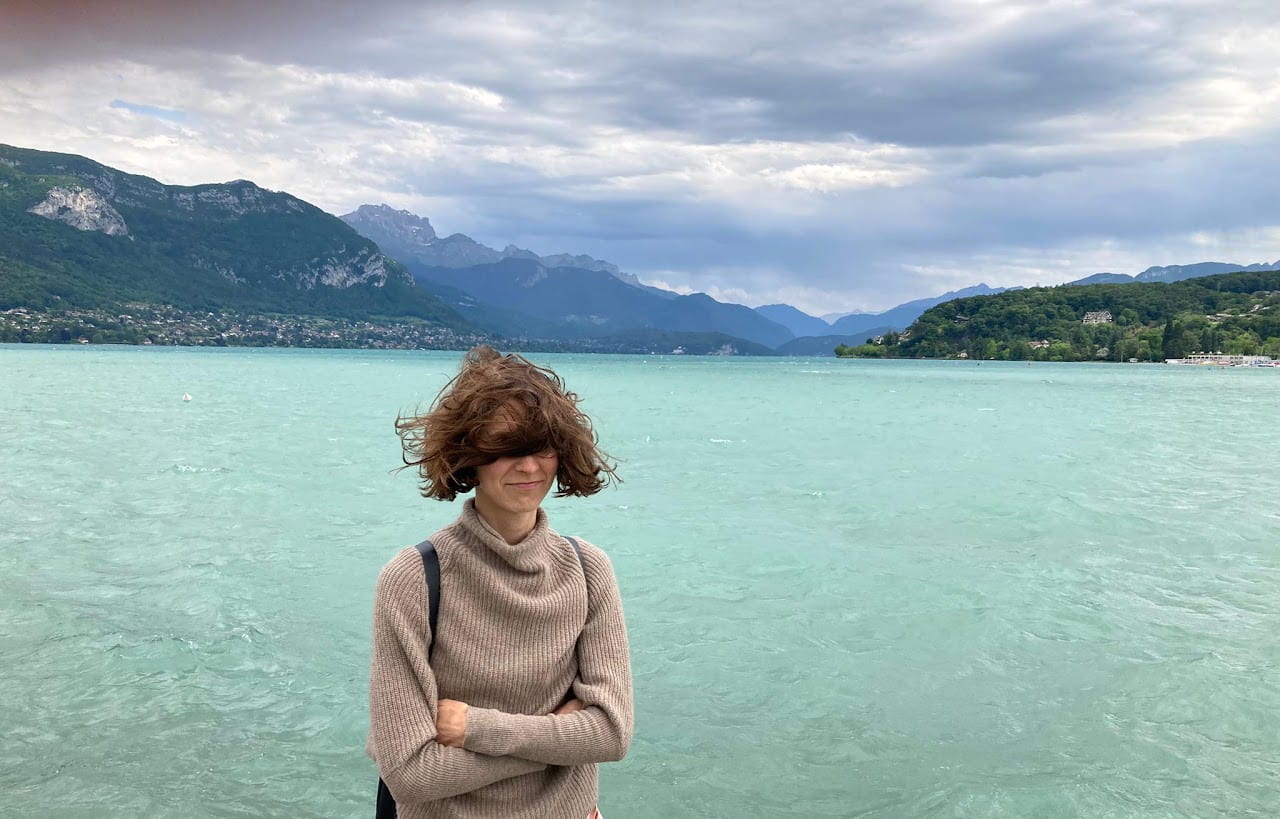
Lisa Piccirillo (MIT)
September 21, 2023, 4:30 pm at MIT
Title: Exotic phenomena in 4-dimensional topology
Abstract: In favorable circumstances, topological 4-manifolds can be classified. In contrast, smooth 4-manifolds remain poorly understood. Several hard questions in 4-manifold topology boil down to asking whether there can be distinct smooth (sub)manifolds with the same topological type; such manifolds are called exotic. In this talk I will discuss a few methods to demonstrate exotic phenomena, and comment on how these methods might be adapted towards addressing some of these questions.
Gerard Ben Arous (Courant Institute)
CANCELLED – to be rescheduled at Brandeis
Title: “ The topological complexity and free energy of the Elastic Manifold”
Abstract: The Elastic Manifold is a complex and central lattice model of a random elastic interface in quenched disorder.
The local disorder imposes a spin-glass type of complexity at each site, but the elastic interaction between sites tends to straighten the interface and tame this complexity. The competition between these two effects, and the behavior of the Elastic Manifold has been extensively studied in Physics, since the initial work by Fisher in the 80’s and then Mézard and Parisi in the 90’s, and until the very recent work by Fyodorov-Le Doussal.
I will survey recent mathematical results with Paul Bourgade (Courant) and Benjamin McKenna (Harvard) on the topological complexity of this interface, which relies on delicate Random Matrix Theory results. I will then give even more recent results with Pax Kivimae (Courant) on the quenched free energy, based on the Guerra-Talagrand version of the physicists’ “cavity method” and confirm the Mézard-Parisi prediction that the phase boundary for the Replica Symmetry Breaking region is given by the so-called Larkin mass.
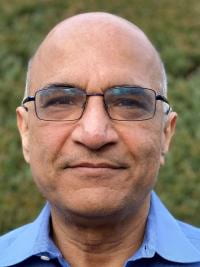
Siddhartha Sahi (Rutgers)
October 26, 2023 at Northeastern
Title: Some results on double affine Hecke algebrasAbstract: Double affine Hecke algebras were introduced by Cherednik in the 1990s in connection with the study of Macdonald polynomials, and over the years they have found many other applications. We will describe two recent results on these algebras.The first result is a new Coxeter-type presentation for these algebras, which reveals that they have large and interesting automorphism groups. In particular they always admit an outer action of a congruence subgroup of SL(2,Z). This is joint work with B. Ion. (Memoirs AMS, 2020)The second result is a new family of representations of these algebras, which leads to certain functions generalizing Macdonald polynomials. These new functions also generalize Whittaker functions for metaplectic covers of reductive p-adic groups, which play a key role in the theory of Weyl group multiple Dirichlet series. This is joint work with J. Stokman and V. Venkateswaran.(Selecta Math 2021)(https://arxiv.org/abs/2204.13729)
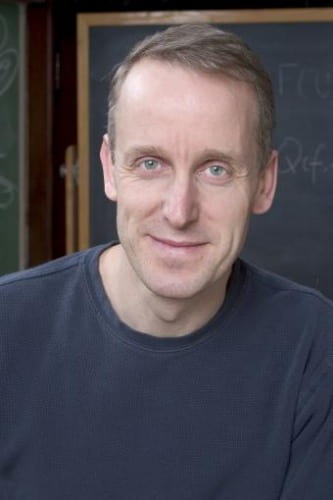
Paul Dupuis (Brown University)
November 9th, 2023 at Brandeis, Abelson 126
Title: Variational representations for functions of Brownian and Poisson noise, and applications
Abstract: We describe a variational representation formula for the integral of a non-negative function with respect to Wiener measure, and the analogous result when Wiener measure has been replaced by the measure induced by a Poisson random measure. These variational formulas, which are all consequences of a very general variational formula using relative entropy, have found various uses. We sketch three such applications: functional inequalities, large deviation properties of solutions to stochastic differential equations, and analysis of interacting particle Monte Carlo schemes.

Bjoern Bringmann (Institute of Advanced Studies)
November 16th, 2023, 4:30 pm at MIT
In the first part of this talk, we review Hamiltonian equations on both Euclidean space and manifolds. Furthermore, we explain how basic results for Hamiltonian equations serve as a motivation for intricate questions on nonlinear wave equations. In the second and third parts of this talk, we state separate theorems for a scalar and a geometric wave equation, respectively. Without discussing any technical aspects, we will try to highlight the interplay of different techniques needed for their proofs.
Jinyoung Park (Stanford University)
September 15, 2022 at MIT
Title: Thresholds
Abstract: For a finite set X, a family F of subsets of X is said to be increasing if any set A that contains B in F is also in F. The p-biased product measure of F increases as p increases from 0 to 1, and often exhibits a drastic change around a specific value, which is called a “threshold.” Thresholds of increasing families have been of great historical interest and a central focus of the study of random discrete structures (e.g. random graphs and hypergraphs), with estimation of thresholds for specific properties the subject of some of the most challenging work in the area. In 2006, Jeff Kahn and Gil Kalai conjectured that a natural (and often easy to calculate) lower bound q(F) (which we refer to as the “expectation-threshold”) for the threshold is in fact never far from its actual value. A positive answer to this conjecture enables one to narrow down the location of thresholds for any increasing properties in a tiny window. In particular, this easily implies several previously very difficult results in probabilistic combinatorics such as thresholds for perfect hypergraph matchings (Johansson–Kahn–Vu) and bounded-degree spanning trees (Montgomery). In this talk, I will present recent progress on this topic. Based on joint work with Keith Frankston, Jeff Kahn, Bhargav Narayanan, and Huy Tuan Pham.
Eva Miranda (Polytechnic University of Catalonia)
September 22, 2022 at Northeastern
Title: From dynamical chaos to logical chaos and vice-versa: Explored and unexplored paths
Abstract: Chaos was coined by Edward Lorenz in 1961 with the simple statement “Chaos: When the present determines the future, but the approximate present does not approximately determine the future”. A different sort of chaos was discovered by Cris Moore in 1990 with a 2D Turing-type dynamical system via generalized shifts. The existence of a Turing machine associated with the dynamical system added a new intrigue to the plot: the undecidability of the halting problem (Alan Turing, 1936) yielded the impossibility of logical predictions in the new models. Those 2D systems given by mappings on the square Cantor set, however, are not realized by a physical system. In this talk, I will give 3D physical (and/or “almost” physical) constructions of logical chaos using fluids. Against all expectations, the main ingredient of this construction is geometrical. It relies on a mirror unveiled in 2000 by Etnyre and Ghrist between Beltrami fields and Reeb vector fields native to contact geometry. Many questions around such construction are pending including the connection among different levels of complexity (dynamical and logical) and the (in)existence of a hierarchy among them. I will end up my talk with some new challenges and open questions.
Richard Kenyon (Yale University)
October 20, 2022 at Northeastern
Title: 3-webs and the boundary measurement matrix
Abstract: 3-webs are bipartite, trivalent, planar graphs. They appear naturally in the representation theory of SL_3: Greg Kuperberg showed that “reduced” 3-webs form a basis for invariant functions in tensor products of SL_3-representations. Webs and reduced webs also occur naturally in the triple-dimer model. We show how various topological types of reduced webs in the triple-dimer model on a (potentially large) planar graph can be computed using Postnikov’s boundary measurement matrix. This is joint work with Haolin Shi.
Junehyuk Jung (Brown University)
October 27, 2022 at Brandeis
Title: Ergodicity and the number of nodal domains of eigenfunctions of the Laplacian
Abstract: Quantum Chaos concerns the relationship between a classical Hamiltonian system, whose Hamiltonian flow is chaotic, and the corresponding quantized system. When the Hamiltonian flow is the geodesic flow on a compact manifold, the corresponding quantized system is understood in terms of the eigenfunctions of the Laplace-Beltrami operators. In this talk, I will discuss how the ergodicity of the geodesic flow can affect the geometry of the nodal set (the zero set) of the eigenfunctions. The main focus of the talk is the growth of the number of the nodal domains of the eigenfunctions, as the corresponding eigenvalues tend to infinity. This presentation is based on joint work with Seung Uk Jang, and Steve Zelditch.
Will Sawin (Columbia University)
November 3, 2022 at MIT
Title: How do special polynomials typically factor?
Mu-Tao Wang (Columbia University)
November 10, 2022 at Brandeis (4:30pm in SSC LL16)
Zoom link: https://brandeis.zoom.
Title: Angular momentum in general relativity
Abstract: Two black holes rotate about each other and eventually merge into a single black hole. How does one measure the angular momentum carried away by gravitational radiation during this merger? This has been a subtle issue since the 1960’s due to the existence of “supertranslation ambiguity”: the angular momentums recorded by two observers of the same system may not be the same.
In this talk, I shall describe how the mathematical theory of quasilocal mass and optimal isometric embedding identifies a new definition of angular momentum that is free of any supertranslation ambiguity. In addition, some recent development of the cross-section continuity of the angular momentum definition will also be discussed. This is based on joint work with Po-Ning Chen, Jordan Keller, Daniel Paraizo, Robert Wald, Ye-Kai Wang, and Shing-Tung Yau.
The talk will be preceded by refreshments, at 4:00 pm in Goldsmith 100.
Tamar Ziegler (Hebrew University)
November 17th, 2022 at MIT (4:30 pm in 2 -190)
Abstract: The Mobius function is one of the most important arithmetic functions. There is a vague yet well known principle regarding its randomness properties called the “Mobius randomness law”. It basically states that the Mobius function should be orthogonal to any “structured” sequence. P. Sarnak suggested a far reaching conjecture as a possible formalization of this principle. He conjectured that “structured sequences” should correspond to sequences arising from deterministic dynamical systems. Sarnak’s conjecture follows from Chowla’s conjecture – which is the mobius version of the prime tuple conjecture. I will describe progress in recent years towards these conjectures, building on major advances in dynamics, additive combinatorics, and analytic number theory.
The talk will be preceded by a reception, at 4:00 pm in 2-290.
Andrew Neitzke (Yale University)
December 1st, 2022 at Brandeis (4:30 pm in Volen 119)
Title: Mirror symmetry and the WKB method
Abstract: Mirror symmetry was originally discovered as a mysterious “duality” relation between Calabi-Yau manifolds X and Y. Strominger-Yau-Zaslow proposed how we should understand it in terms of classical differential geometry. Their picture has motivated an enormous body of literature, but in general it is still far from established. I will describe a special case where X and Y are certain moduli spaces, parameterizing ordinary differential equations defined on a Riemann surface. In this case the SYZ picture has been made much sharper, thanks to surprising connections to quantum field theory, enumerative geometry, and the theory of ordinary differential equations (the “exact WKB method”).
Refreshment served in Goldsmith 100 at 4:00 pm.
Tomer Schlank (Hebrew University)
February 9, 2023 at MIT (4:30 pm in 2-190)
Title: Chromatic Homotopy Theory and Higher Algebra.
Abstract: In the world of homotopy theory, there are analogs of abelian groups called Spectra. Spectra are extremely useful in algebraic topology, differential topology, algebraic K-theory, and more. According to the primary decomposition theorem, Abelian groups decompose into parts according to different primes. One of the great insights in the study of spectra is that they decompose in an even richer way according to so-called “chromatic primes”. In the talk, we shall discuss some of the places where spectra appear in mathematics and how these extra primes arise, studied, and utilized. We also discuss “higher algebra” – that is, algebra with spectra taking the role of abelian groups- and see how it sheds light back on the different mathematical fields in which spectra appear.
Ching-Yao Lai (Princeton University)
February 16, 2023 at MIT
Title: Physics-informed neural networks for fluid and ice dynamics
Abstract: Physics-informed neural networks (PINNs) have recently emerged as a new class of numerical solver for partial differential equations which leverage deep neural networks constrained by equations. I’ll discuss two applications of PINNs in fluid dynamics developed in my group. The first concerns the search for self-similar blow-up solutions of the Euler equations. The second application uses PINNs as an inverse method in geophysics. Whether an inviscid incompressible fluid, described by the 3-dimensional Euler equations, can develop singularities in finite time is an open question in mathematical fluid dynamics. We employ PINNs to find a numerical self-similar blow-up solution for the incompressible 3-dimensional Euler equations with a cylindrical boundary. In the second part of the talk, I will discuss how PINNs trained with real world data from Antarctica can help discover flow laws that govern ice-shelf dynamics. These ice shelves play a role in slowing the flow of glaciers into the ocean, which impacts global sea level rise. However, the effective viscosity of the ice, a crucial material property, cannot be directly measured. By using PINNs to solve the governing equations for the ice shelves and invert for their effective viscosity, we were able to calculate flow laws that differ from those commonly assumed in climate simulations. This suggests the need to reassess the impact of these flow laws on sea level rise projections.
Igor Frenkel (Yale University)
February 23, 2023 at Northeastern. 4:30 pm in 511 Lake Hall.
Barak Weiss (Tel Aviv University)
March 23, 2023 at Brandeis
Title: Horocycle flow on the moduli space of translation surfaces
Abstract: I will discuss the dynamics of the horocycle slow on a stratum of translation surfaces (which is an invariant subvariety of the bundle Omega M_g of holomorphic one forms over the moduli space of genus g Riemann surfaces). This flow can be defined as the action of upper triangular matrices with eigenvalue 1, acting linearly on flat charts. Work of Ratner on unipotent flows on homogeneous spaces leads to the question of whether the orbit-closures and invariant measures for this action can be meaningfully classified. I will quickly survey both positive and negative results in this direction. The talk will be based on joint work with Bainbridge, Chaika, Smillie, and Ygouf (in various combinations).
Vyjayanthi Chari (UC Riverside)
March 30, 2023 at Northeastern
Colloquium cancelled due to unforeseen circumstances.
The colloquium meets (by default) on Thursdays at 4:30 PM Eastern (contact institutional organizers for details). The organizers include Daniel Ruberman at Brandeis; Fabian Gundlach, Myrto Mavraki, and Assaf Shani at Harvard; Scott Sheffield at MIT; and Iva Halacheva, Matan Harel, Matthew Hogancamp, and Jonathan Weitsman at Northeastern. This website is maintained by Iva Halacheva. The image of Boston is the property of Wikimedia user King of Hearts and is reproduced here under Creative Commons license CC BY-SA 4.0. Images of speakers are their own property and are reproduced here with permission.























